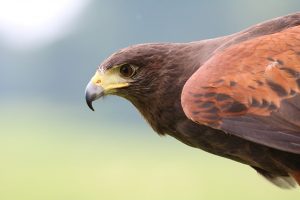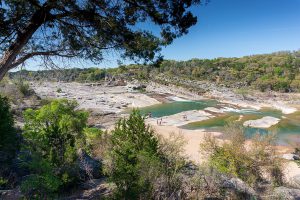The Texas Hill Country is known for its scenic rolling hills, crystal clear rivers with towering Cypress trees, and the endangered Golden-cheeked Warbler.
It hosts several species that are common to Texans, but absent in most other states. Birds like the Golden-fronted Woodpecker, Black-crested Titmouse, and Crested Caracara are a delight to many out of state visitors.
Here’s 9 of the best places in central Texas to go birding:
South Llano River State Park
Lost Maples State Natural Area
Inks Dam National Fish Hatchery
Inks Lake State Park
Pedernales Falls State Park
Cook’s Slough Nature Center
Balcones Canyonlands National Wildlife Refuge
Heart of the Hills Fisheries Center
Guadalupe River State Park
The best central Texas birding is usually at South Llano River State Park or Lost Maples State Natural Area. If you’re specifically targeting Golden-cheeked Warblers try South Llano River, Lost Maples, Pedernales Falls State Park, or Balcones Canyonlands.
South Llano River State Park
Entrance Fee: $5 per person
Office open 8am – 5pm
Main entrance gate does not close.

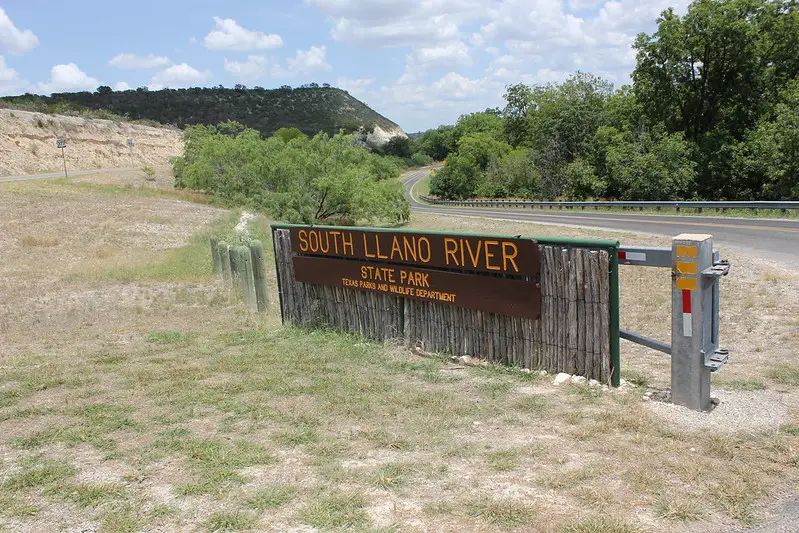
This state park is a favorite of many bird watchers in the region. It features four bird blinds, plus easy viewing of Golden-cheeked Warblers and Black-capped Vireos. It’s a great spot to stay overnight for birders that enjoy camping.
The best time to visit is from mid-April through the first two weeks of May. You’ll likely see migrants during this window, including some western species like MacGillivray’s Warbler and Lazuli Bunting. Golden-cheeked Warblers are fairly easy to come by through June, as are Black-capped Vireos.
This park is in an overlap range of several eastern and western species. During winter you can see both Eastern Bluebirds and Western Bluebirds, while year-round you can see both Downy Woodpecker and Ladder-backed Woodpecker.
Southern species are also present like Brown-crested Flycatcher, Olive Sparrow, and occasionally Long-billed Thrasher.
Be sure to check the park status before you go. Sometimes they require reservations ahead of time to enter. During hunting season from October to early January, the park will sometimes close during the middle of the week.
Birds to See
| Year-round | Common Ground Dove Greater Roadrunner Green Kingfisher Golden-fronted Woodpecker Crested Caracara Vermillion Flycatcher Verdin Bushtit Cactus Wren Canyon Towhee Pyrrhuloxia |
| Spring – Fall | Northern Bobwhite Zone-tailed Hawk Eastern Wood-Pewee Brown-crested Flycatcher Black-capped Vireo Bell’s Vireo Cassin’s Sparrow Yellow-breasted Chat Golden-cheeked Warbler Scott’s Oriole |
| Winter | Osprey Western Bluebird Fox Sparrow Dark-eyed Junco |
Lost Maples State Natural Area
Entrance Fee: $6 per person
Office Open 8am – 4:30pm
No park gate, enter at any time.


Lost Maples is famous to most central Texas residents for it’s grand show of fall colors some years, provided by the Bigtooth Maples that grow in the sheltered canyons here. But it’s also a great birding hotspot, especially during spring and early summer before the heat really kicks in.
This park can get crowded on fair weather weekends, and gets really crazy during weekends in late October and early November. Reserve your entrance pass ahead of time to guarantee entry.
There’s a great mix of eastern and western species here, and even some south Texas birds like White-tipped Dove and Green Kingfisher.
If you’re looking to see a Golden-cheeked Warbler and Black-capped Vireo in one place, Lost Maples is a great choice. You’ll see other colorful birds like Scott’s Oriole and Painted Bunting, and will hear others singing like Yellow-throated Warbler.
Along the Frio River you can spot Green Kingfisher and Black Phoebe.
Birds to See
| Year-round | Wild Turkey White-tipped Dove Greater Roadrunner Eastern Screech-Owl Green Kingfisher Golden-fronted Woodpecker Black Phoebe Chihuahuan Raven Bushtit Olive Sparrow |
| Spring – Fall | Northern Bobwhite Eastern Wood-Pewee Scissor-tailed Flycatcher Black-capped Vireo Red-eyed Vireo Scott’s Oriole Louisiana Waterthrush Black-and-White Warbler Yellow-throated Warbler Golden-cheeked Warbler Blue Grosbeak Indigo Bunting Painted Bunting |
| Winter | Golden-crowned Kinglet Pine Siskin |
Inks Dam Fish Hatchery
Open Mon – Fri 7:30am to 3:30pm
Closed on Federal Holidays
Entrance is Free

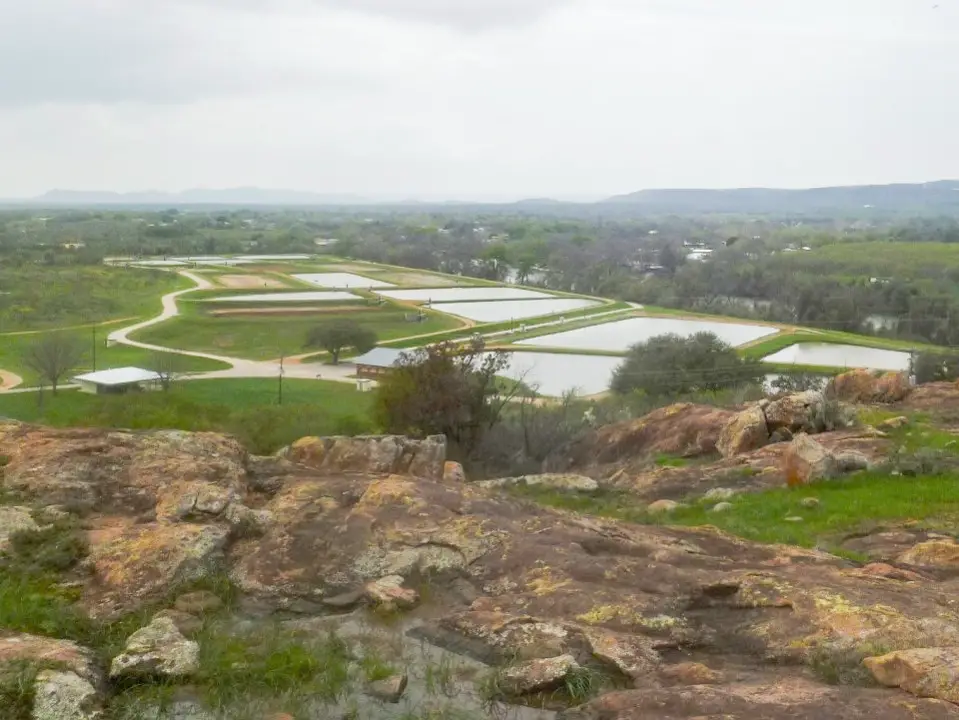
Inks Dam Fish Hatchery is a great spot to take it slow in one of the smaller properties on this list. It’s about an hour and 15 minute drive from central Austin, and is located just below the dam that creates Ink’s Lake, which is just below the much larger Lake Buchannan. The Colorado River forms the western boundary of this property.
Inks Dam Fishery features multiple hiking trails, a bird blind, native plant gardens, and picnic table. The paved Riverfront Trail provides direct access to the Colorado River, while the Pecan Grove Trail gives easy access to some of the holding ponds and hardwoods growing along Peter’s Creek.
A trip to the hatchery pairs perfectly with a visit to Ink’s Lake State Park, located just a few miles up the road.
Birds to See
| Year-round | Wild Turkey Greater Roadrunner Golden-fronted Woodpecker Cactus Wren Canyon Wren Canyon Towhee Rufous-crowned Sparrow Black-throated Sparrow |
| Spring – Fall | Scissor-tailed Flycatcher Bell’s Vireo Painted Bunting Orchard Oriole |
| Winter | Osprey Bald Eagle |
Ink’s Lake State Park
Entrance Fee: $6 per person
Open Daily until 10pm (Office Hours 8am to 5pm)

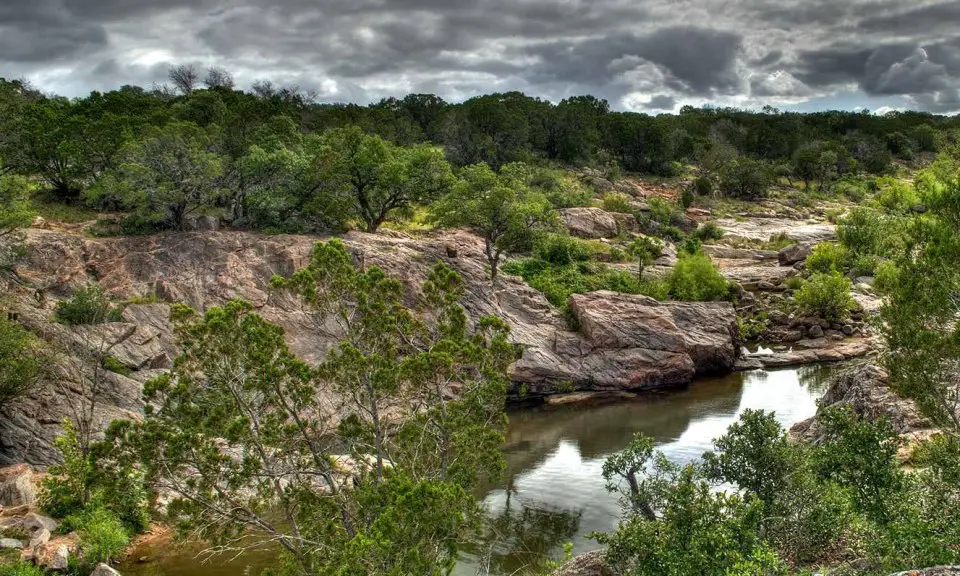
Ink’s Lake is known for its water recreation, spring Bluebonnet blooms, and camping facilities. It’s also a good place to spot Hill Country bird species. With over 9 miles of hiking trails, a bird blind, and open lake water, there’s more than enough to keep a birder busy for a few hours.
The bird blind is located on the north side of Spring Creek and Devil’s Waterhole, while the rest of the park is located on the south side. You can either hike the trail that goes around Devil’s Waterhole, or simply drive there and utilize the small parking lot.
Birds to See
| Year-round | Greater Roadrunner Belted Kingfisher Golden-fronted Woodpecker Ladder-backed Woodpecker Woodhouse’s Scrub-Jay Canyon Wren Eastern Bluebird Lesser Goldfinch Black-throated Sparrow Rufous-crowned Sparrow |
| Spring – Fall | Scissor-tailed Flycatcher Bell’s Vireo Orchard Oriole Painted Bunting |
| Winter | Wood Duck Bufflehead Forster’s Tern American White Pelican Osprey Yellow-bellied Sapsucker |
Guadalupe River State Park
Entrance Fee: $7 per person
Open 8am to 4:30pm

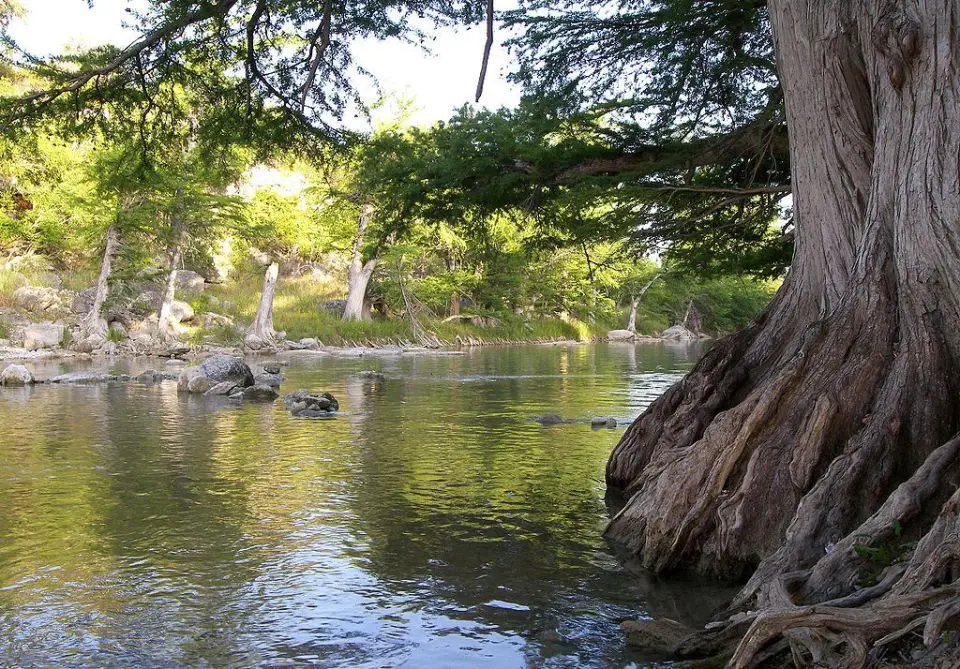
Guadalupe River State Park provides ample access to a classic Texas Hill Country river. Cool, crystal clear water that’s always flowing feeds majestic Cypress trees that provide shade along the banks. The trees also make for great spring and summer habitat for birds like Yellow-throated Vireo, Red-eyed Vireo, and Yellow-throated Warbler.
Located less than an hour from central San Antonio, this park can get busy on weekends and holidays and often reaches capacity. When this happens, park rangers close the entrance and are forced to turn people away as they arrive. If you plan on birding this park on a weekend from April through November, or during spring break, reserve an entrance pass ahead of time online.
Be sure to visit the bird blind, located along the Bald Cypress Trail at the north end of the park, near the river and main parking area.
Birds to See
| Year-round | Wild Turkey Common Ground Dove Golden-fronted Woodpecker Ladder-backed Woodpecker Crested Caracara Canyon Wren |
| Spring – Fall | Northern Bobwhite Eastern Wood-Pewee Acadian Flycatcher Vermillion Flycatcher Scissor-tailed Flycatcher Yellow-throated Vireo Red-eyed Vireo Black-and-White Warbler Northern Parula Yellow-throated Warbler Indigo Bunting Painted Bunting |
| Winter | Pine Siskin Hermit Thrush Spotted Towhee |
Pedernales Falls State Park
Entrance Fee: $6 per person
Open Daily until 10pm
Office Open 8am – 5pm


A day pass reservation is often needed on weekends to guarantee entry.
Pedernales Falls is known for its shallow, scenic falls on the Pedernales River. It’s also a great place to look for a Golden-cheeked Warbler starting in mid-March.
The best way to find a Golden-cheek here is to arrive early shortly before sunrise. Drive all the way down the main road until it dead ends at a circular parking lot. Listen for them here, and if you don’t hear any then head down the nearby trail toward the falls, which is marked by a sign. A singing male is almost always present in the first 100 feet of this trail.
Another decent place to search for Golden-cheeked Warblers is the RV hookup campsite. Simply walk along the paved road until you hear one singing in the Juniper trees.
There’s only one bird blind at this park, but it’s a quality one and features two separate viewing stations. It’s great for seeing birds up close like Woodhouse’s Scrub-Jay, Canyon Wren, Spotted Towhee, and Rufous-crowned Sparrow.
This is also a fantastic place to see Painted Buntings. Starting in mid-April the males seem to be everywhere, singing energetically from the trees. Listen for their song as you slowly roll along in your car with your windows down, or as you walk along a trail. They stop singing as often around late June, and migrate south in September.
This park gets busy on weekends due to its proximity to Austin, so be sure to reserve your entrance pass online ahead of time. During fall and winter months be sure to check for closures due to hunting season.
Birds to See
| Year-round | Northern Bobwhite Wild Turkey Common Ground Dove Greater Roadrunner Eastern Screech-Owl Golden-fronted Woodpecker Crested Caracara Woodhouse’s Scrub-Jay Verdin Canyon Wren Rufous-crowned Sparrow |
| Spring – Fall | Chuck-will’s-widow Ash-throated Flycatcher Scissor-tailed Flycatcher Yellow-throated Warbler Black-and-White Warbler Golden-cheeked Warbler Blue Grosbeak Indigo Bunting Painted Bunting |
| Winter | Say’s Phoebe Pine Siskin Fox Sparrow |
Cooks Slough Sanctuary and Nature Park
Entrance is Free
Hours are Sunrise to Sunset


This city park in Uvalde is easily some of the best birding immediately west of San Antonio, despite its smaller size. It features 25 acres of wetlands and two wildlife viewing stations.
This park works in conjunction with the nearby wastewater treatment facility, which is the reason the ponds and wetlands exist here.
Winter is good for ducks and Sandhill Crane. During spring and summer be sure to brush up on your oriole ID, since this park can have 4+ species during the warmer months.
This park blurs the line between Hill Country and South Texas, but that just means there’s more to see.
Some south Texas goodies to be found here include Groove-billed Ani, Lesser Nighthawk, Green Jay, Long-billed Thrasher, and Audubon’s Oriole.
Birds to See
| Year-round | Black-bellied Whistling Duck Wood Duck Green-winged Teal Wild Turkey Common Ground Dove Greater Roadrunner Green Kingfisher Black-crowned Night Heron Golden-fronted Woodpecker Black Phoebe Green Jay Cactus Wren Long-billed Thrasher Olive Sparrow Audubon’s Oriole |
| Spring – Fall | Groove-billed Ani Lesser Nighthawk Scissor-tailed Flycatcher Bank Swallow Hooded Oriole Bullock’s Oriole Painted Bunting |
| Winter | Sandhill Crane Wilson’s Snipe American White Pelican Golden-crowned Kinglet |
Balcones Canyonlands National Wildlife Refuge
Entrance is Free
Headquarters Office Open 8:00am to 4:30pm.
Trails open Sunrise to Sunset

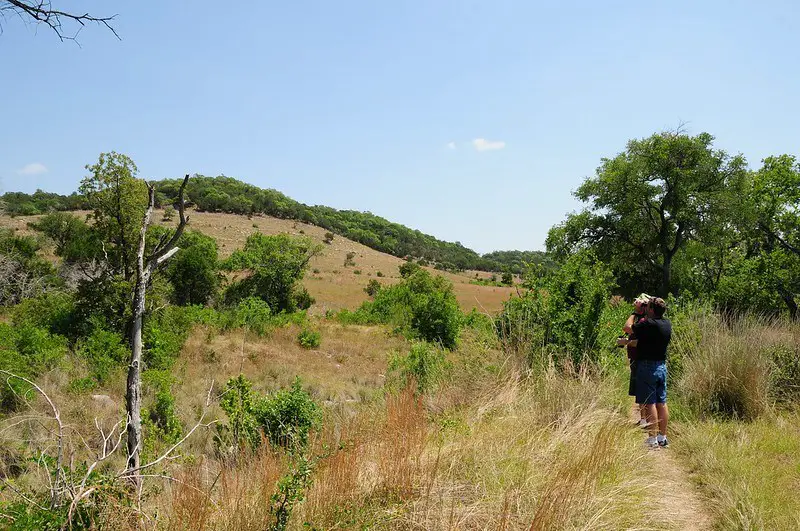
Balcones Canyonlands is a fantastic place to observe Golden-cheeked Warblers, and is good for Black-capped Vireo and Painted Bunting. During winter the diversity of sparrows here is one of the highest in the state.
The headquarters features a bird blind and is a good place to start. Nearby Warbler Vista trail is generally the easiest place to find a Golden-cheeked Warbler, which are active from mid-March through June.
Doeskin Ranch is further north away from central Austin, and is one of the best places for sparrows duing winter months. Arrive at first light and spend two or three hours here, and you’ll have about a 30%-50% chance of seeing a LeConte’s Sparrow, along with 12+ other sparrow species.
Doeskin Ranch is also the best place for general hiking due to the elevation change, open spaces, and scenic views.
Generally the bird activity here really dies down after mid to late-morning, so try to arrive by sunrise if possible.
Birds to See
| Year-round | Wild Turkey Golden-fronted Woodpecker Woodhouse’s Scrub-Jay |
| Spring – Fall | Northern Bobwhite Vermilion Flycatcher Black-capped Vireo Golden-cheeked Warbler Blue Grosbeak Painted Bunting |
| Winter | Northern Harrier LeConte’s Sparrow 12+ other sparrow species |
Heart of the Hills Fisheries Center
Open 8am to 5pm
Entrance is Free (sign in at office)


Winter months here are good for spotting ducks on the ponds, and sparrow diversity can be excellent. Bald Eagles are occasionally seen here as well during winter, but be sure to differentiate them from the much more common Osprey.
This hatchery is a good place to try for migrating shorebirds, especially in April and May. Common migrants include Baird’s Sandpiper, White-rumped Sandpiper, Pectoral Sandpiper, Semipalmated Sandpiper, Solitary Sandpiper, Wilson’s Phalarope, and White-faced Ibis.
This is also a good spot to try for Ringed Kingfisher along the river.
Birds to See
| Year-round | Ringed Kingfisher Golden-fronted Woodpecker Vermillion Flycatcher Canyon Wren Rufous-crowned Sparrow |
| Spring – Fall | Zone-tailed Hawk Black-capped Vireo Yellow-headed Blackbird Yellow-throated Warbler Painted Bunting |
| Winter | Duck species Least Grebe Osprey Bald Eagle |
For more birding hotspots, visit our Texas Hotspots Map for full birding guides with photos.



